MTG Sideboarding Guide: What Is Sideboarding, How And Why To Do It, FAQs, & More
.jpg)
Sideboarding is very important in Magic: The Gathering, and understanding the nuances can elevate your game to new heights. In fact, effective sideboarding can make the difference between winning and losing. Today's guide will dive deep into how to sideboard in MTG, discuss some of the more subtle nuances of deck adjustment, and provide a few other valuable insights.
I'll cover what sideboarding is, why you should do it in your games, what makes good sideboard cards, some of the common things you'll want to be prepared for with your sideboard, answer some common questions, and give you a few tips and tricks that I wish I had known sooner. So, let's jump right in.
How to Sideboard in MTG
What Is Sideboarding In Magic: The Gathering
In MTG, the "sideboard" is a reserved set of up to 15 cards (kept separate from your main deck) that you can use to modify your main deck between games in a match. The sideboard allows players to adapt their deck based on their opponent's deck or strategy. Sideboarding is usually reserved for "best-two-out-of-three" games and takes place after game one.
Once a match is finished, each player's deck is returned to the original form (by removing any sideboard cards) for game one of the next round.
What Is Sideboarding For?
Sideboarding serves two primary purposes. Firstly, it enables you to adapt to your opponent's strategy. Secondly, it addresses inherent weaknesses within your deck, allowing you to fine-tune for specific matchups. Generally, your sideboard will include cards you wouldn't need in every matchup but would be highly effective in certain situations.
For example, let's look at Naturalize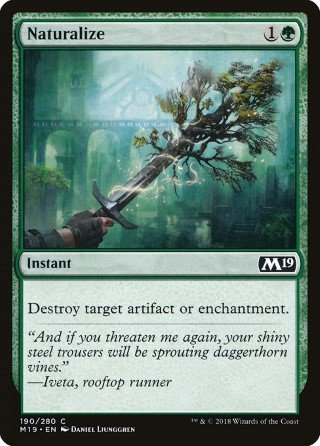 . It has a very specific effect and probably doesn't advance your deck strategy much. In other words, if you include this in your main deck and your opponent isn't playing any artifacts or enchantments, it will be a card you can't use.
. It has a very specific effect and probably doesn't advance your deck strategy much. In other words, if you include this in your main deck and your opponent isn't playing any artifacts or enchantments, it will be a card you can't use.
On the other hand, if an opponent does have key artifacts or enchantments such as Ensnaring Bridge or Blood Moon
or Blood Moon and you have no way to answer them, you could be in very big trouble. This is where your sideboard comes in to save the day. It gives you access to a small suite of cards you won't always need, but you'll be happy to have them in your back pocket when you do. All while not watering down the primary goal of your deck.
and you have no way to answer them, you could be in very big trouble. This is where your sideboard comes in to save the day. It gives you access to a small suite of cards you won't always need, but you'll be happy to have them in your back pocket when you do. All while not watering down the primary goal of your deck.
An example of how your sideboard can be used to cover your own weaknesses: let's say you're the one who built around a particular enchantment or artifact or creature, and your deck relies on having (and keeping it) in play to function. If your opponent has a proper sideboard made, you can count on them bringing in cards that will remove it.
If you have vital things you need to protect, having cards like Negate , Vexing Shusher
, Vexing Shusher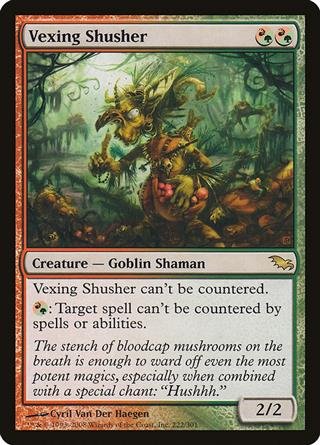 , Welding Jar
, Welding Jar , or even Noxious Revival
, or even Noxious Revival could come in handy. If you've built your entire deck around using your graveyard, you'll want to deal with an opposing Rest in Peace
could come in handy. If you've built your entire deck around using your graveyard, you'll want to deal with an opposing Rest in Peace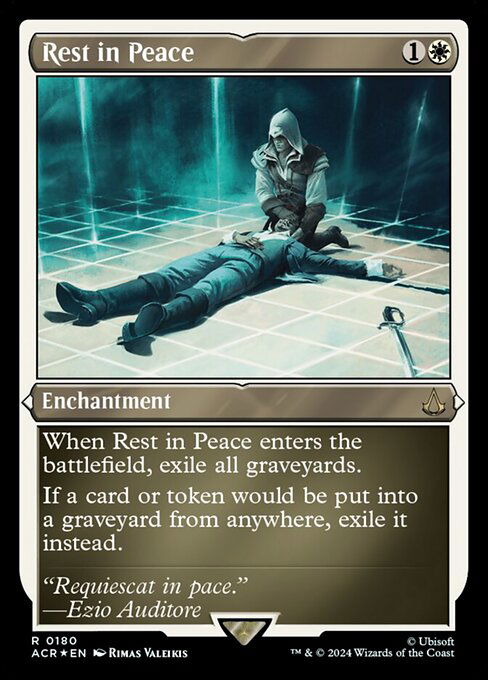 should you see one. These are some examples of how your sideboard can be used to cover your bases.
should you see one. These are some examples of how your sideboard can be used to cover your bases.
To summarize, you sideboard to improve your deck or matchup against a particular strategy. Usually, with cards you probably wouldn't need often enough to have in your main deck, but that could be highly impactful in situations where you do need them.
How To Make A Good Sideboard
We know what a sideboard is and why you need one. Let's move into how to make a quality sideboard for your deck. Exactly what cards you'll need will depend on your format, the meta, your main deck, and many other things. So, instead of specific cards, I will arm you with the knowledge to find which cards work best for you and your build. Remember that there are exceptions to nearly everything; use these as general guidelines.
Know The Meta
In MTG, "the meta" refers to the current popular and commonly played decks, strategies, and cards in a given scene. If you know the meta you expect to play in, you'll likely want your cards geared somewhat toward dealing with the specific, problematic things you'll encounter.
Adjusting to the meta can also influence what you don't play. If all the most popular decks in the meta are controlling decks without many creatures, you probably won't need as many cards like Path of Peril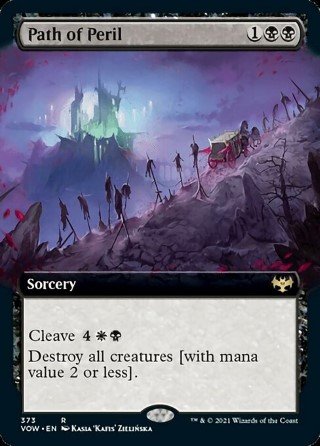 , Wrath of God
, Wrath of God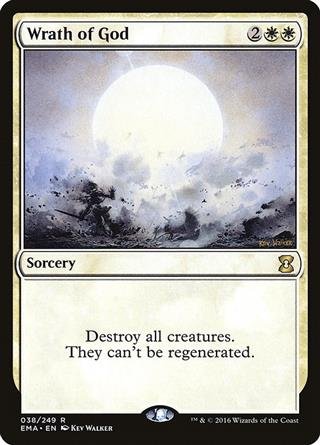 , or Supreme Verdict
, or Supreme Verdict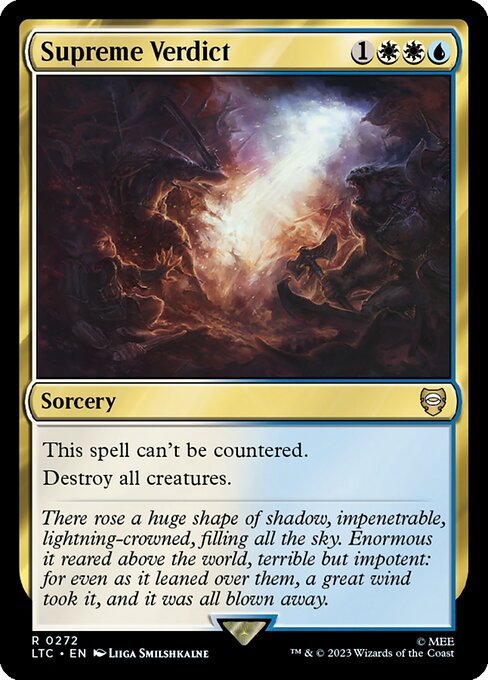 . Whereas if all your friends like to play aggro decks that make a ton of tokens, they're great. Assuming you know what folks are playing, cards that are good in the meta are an excellent place to start.
. Whereas if all your friends like to play aggro decks that make a ton of tokens, they're great. Assuming you know what folks are playing, cards that are good in the meta are an excellent place to start.
If you're building a sideboard and have no idea what the meta will bring, you'll want to use generally good, versatile cards that cover many bases and sure up your own deck's weaknesses instead of trying to guess exactly what you'll come up against.
Use Versatile Cards
Your sideboard can only have 15 cards at the max. So, having versatile cards is very important. If your answers are good in various situations, you'll feel like you have way more than 15 cards at your disposal. Look at Tranquil Frillback currently seeing play in Standard - It can destroy artifacts and enchantments, deal with a graveyard, and gain you four life. And assuming you have extra mana, it can do all of the above.
currently seeing play in Standard - It can destroy artifacts and enchantments, deal with a graveyard, and gain you four life. And assuming you have extra mana, it can do all of the above.
Furthermore, it's a creature with decent stats. This means regardless of how useful any of the abilities are when you draw it, you've always got a 3/3 creature if nothing else. This is an excellent example of a versatile sideboard card and something you'll always have a use for.
Some other cards that fall into this category are Kaya's Guile , Damping Sphere
, Damping Sphere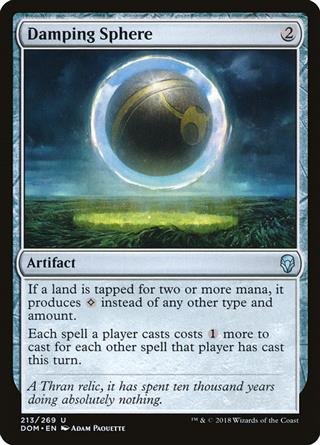 , Fracture
, Fracture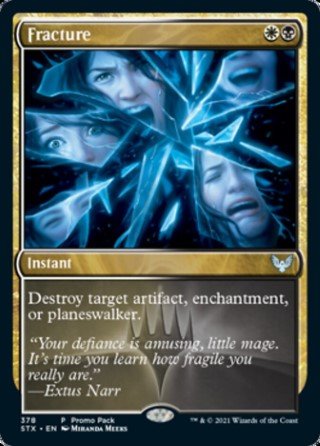 , etc. Cards like these are going to be helpful in a high number of circumstances. However, don't be afraid to be specific. Leyline of the Void
, etc. Cards like these are going to be helpful in a high number of circumstances. However, don't be afraid to be specific. Leyline of the Void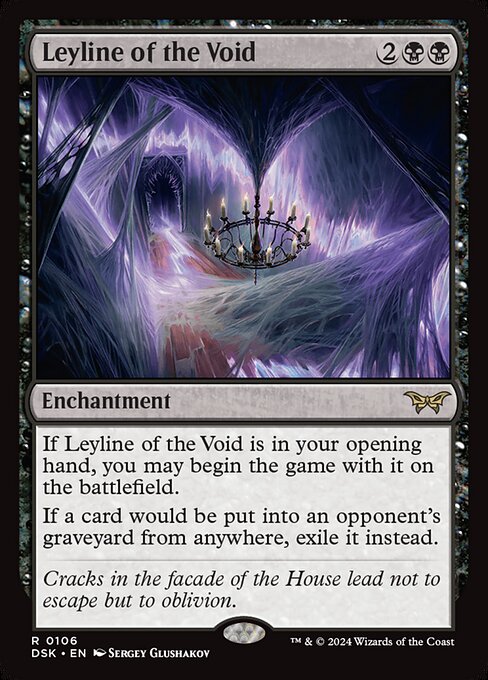 doesn't do anything but hate out decks using the graveyard, but it does it very well. It may be narrow, but what it lacks in versatility, it makes up for in effectiveness. And that's ok.
doesn't do anything but hate out decks using the graveyard, but it does it very well. It may be narrow, but what it lacks in versatility, it makes up for in effectiveness. And that's ok.
The key takeaway is to use cards that cover as many bases as possible when possible. But don't be afraid to play the most direct answer to a problem if it's imperative to ensure you have a solution.
Harmony With Your Main Deck
You'll also need to consider what your deck is doing when you pick your sideboard cards. This can be true for several reasons. First, you'll generally want to swap cards out of your main deck for sideboard cards so that the overall number of cards stays the same. For example, if you have five cards you want to add from your sideboard, you'll want to remove five main deck cards to make space.
It's not against the rules to add sideboard cards and not remove cards, but playing the least amount of cards possible helps your deck be more consistent. So, when you sideboard, you'll often look at what cards you need to add and which main deck cards you don't need or need the least. This concept is vital for a few reasons.
Maintain Mana Curve And Mana Base
You wouldn't want to take out five one-mana spells and add in five five-mana spells. Doing so would throw the construction of your deck off quite a bit. The same can be true of the color of the cards you swap. If you take out several Gifted Aetherborn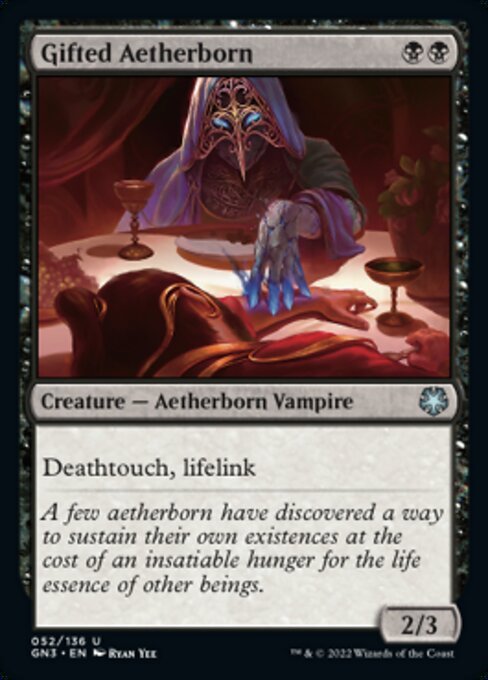 and add in Auriok Champion
and add in Auriok Champion , you need to be sure your mana base can support that change.
, you need to be sure your mana base can support that change.
So, when you pick sideboard cards, envision what cards you'll be taking out, too, and make sure they mesh with the deck when swapped. An example of doing this well would be having Duress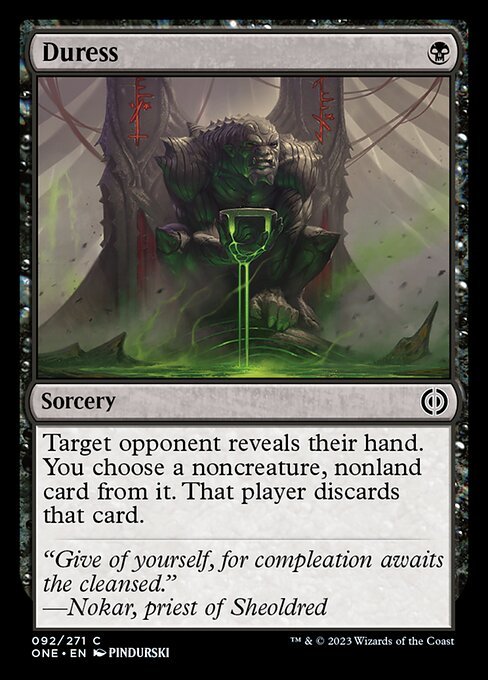 in your sideboard to deal with control and knowing you'll be removing Cut Down
in your sideboard to deal with control and knowing you'll be removing Cut Down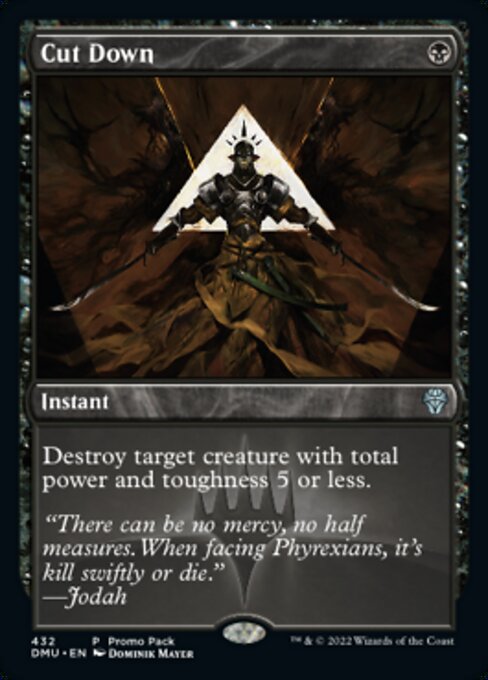 to make space for it. You can be sure swapping these wouldn't disrupt your deck.
to make space for it. You can be sure swapping these wouldn't disrupt your deck.
Avoid Choices That Disrupt Your Overall Strategy
You'll need to avoid having many cards in your sideboard that disrupt your strategy. Are you playing a creature-based aggro deck? If so, bringing in board wipes that destroy all creatures could hurt you just as badly as your opponent. You can still play them just look for things that work with what you're doing. In this example, Settle the Wreckage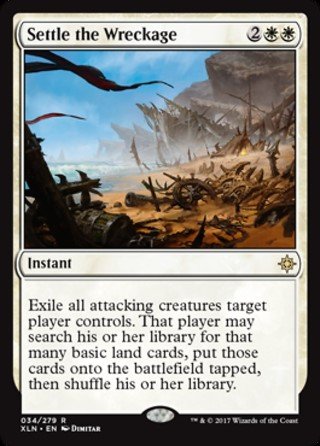 would work.
would work.
In this section, I must inform you that some strategies sideboard much better than others. As I mentioned, you'll remove one main deck card and add one sideboard card in its place. Some decks have less expendable cards to remove without reducing their overall functioning ability.
Very streamlined aggro decks often run into this problem. If you build your deck to put creatures into play and attack your way to victory, you will do more harm than good by taking out eight aggressive creatures to add in sideboard cards if they aren't creatures.
Usually, the more linear your strategy (meaning your deck tries to do the same thing, in the same way, every game), the fewer cards you can afford to swap. On the other hand, if your deck isn't linear and is more adaptive to what the oppoent is doing, you can exchange more things with less consequences.
If your deck needs to maintain a critical mass of a particular thing, you'll have to consider that when building your sideboard and using cards that fit. The advanced search option on sites like Scryfall.com can help you search for specific things by ability, creature/card type, mana cost, and more.
Sideboard Tips And Tricks
Here are a few random tips I've picked up over the years:
Consider What Your Oppoent May Sideboard
You don't want to go too far down the rabbit hole of sideboarding against your opponent's sideboarding. However, there are times when I want you to consider it. If you were them, what would you bring in against your deck? If bringing in graveyard hate versus your deck is a no-brainer, you can prepare for that.
What graveyard hate do they have in their colors? Are there enchantments and artifacts like Tormod's Crypt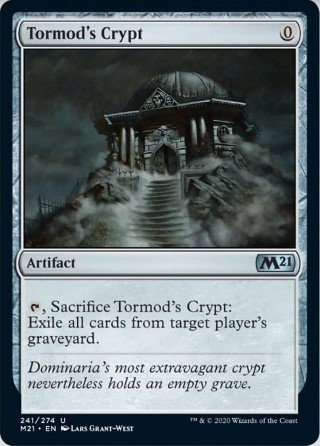 and Rest in Peace
and Rest in Peace they have access to? Well, consider bringing in something to remove those cards ahead of time.
they have access to? Well, consider bringing in something to remove those cards ahead of time.
Pretend To Sideboard
Sometimes, you feel like you don't need any of your sideboard cards, and that's okay. When that happens, don't shuffle up and prepare for the next game. I promise, if your oppoent is astute, they'll notice and take note of this. Instead, stick two or three of your sideboard cards into your deck. Then, flip through the deck, and without showing the other player what you take out, just remove them. You'll have your starting deck... But they won't know that.
Count Your Sideboard Cards After Boarding
Sometimes you'll add in some cards and accidentally remove a different number. If you start at 60, add in four, and only remove three, you play too many cards. This sucks, but it's not illegal. If you err in the other direction though, you could be in trouble. In most formats, your deck has to have at least 60 cards. So, if you add four and take out five, now you're at 59, and your deck isn't legal.
To mitigate this, players will often count their deck. You do want to do a count, but don't count the main deck. Instead, save time and count the sideboard. If you've got 15 cards, you know you've got 60 in the main deck.
FAQs About Sideboarding
.png)
Q: Can You Have Less Than 15 Sideboard Cards?
A: Yes. You can have any number of cards in your sideboard if it's not over 15. That said, I can't imagine a scenario where you'd benefit from playing less than the maximum.
Q: How Many Cards Should I Sideboard?
A: The maximum number of cards you can sideboard is 15. However, it's essential to maintain a balance and avoid overloading on sideboard cards to ensure the consistency of your main deck. You want to swap out the fewest cards necessary to improve the match-up.
Some exceptions to this are if you have dead cards in a particular matchup. For example, say you have six spells to remove creatures in your main deck, and your opponents are playing a creatureless deck. Let's assume you remove three removal spells for Duress , which would be helpful.
, which would be helpful.
You've still got three dead cards. In this case, swapping them for a Thrashing Brontodon would be better, even if there are no artifacts or enchantments, because it's a possible attacker.
would be better, even if there are no artifacts or enchantments, because it's a possible attacker.
Q: How Many Copies Of A Card Can Go In Your Sideboard?
A: You can play up to four copies of a card across both your main deck and sideboard unless the card says otherwise. So, you can have four copies of Negate in the sideboard as long as there are none in the main deck. If you played two in the main deck, you could have the other two in the sideboard. In other words, four copies of a given across your 75, regardless of how they're distributed.
in the sideboard as long as there are none in the main deck. If you played two in the main deck, you could have the other two in the sideboard. In other words, four copies of a given across your 75, regardless of how they're distributed.
Q: Can You Put Land In Your Sideboard?
A: Yes. You can put land cards in your sideboard. This isn't done too often, but if you have lands you may want to swap in/out, it's certainly legal to do so.
Q: Do You Have To Have A Sideboard?
A: You don't have to have a sideboard if you don't want to. However, it's nothing but upside in terms of strategic value. So, I highly recommend you use one if possible.
Conclusion
Building a great sideboard is a nuanced art that can be an invaluable asset to your game. In a best-of-three situation, you play more sideboarded games than you do with your starting 60. Perfection of your 15 comes with practice, knowing the metagame, selecting versatile answers, and executing strategic adjustments.
In my experience, honing your sideboarding skills is akin to tuning an instrument—each adjustment refines your deck's harmony and enhances your chances of success. That said, I hope you found today's guide useful in understanding how to sideboard in MTG. If you have any questions, comment and let me know, and I'll get back to you.



